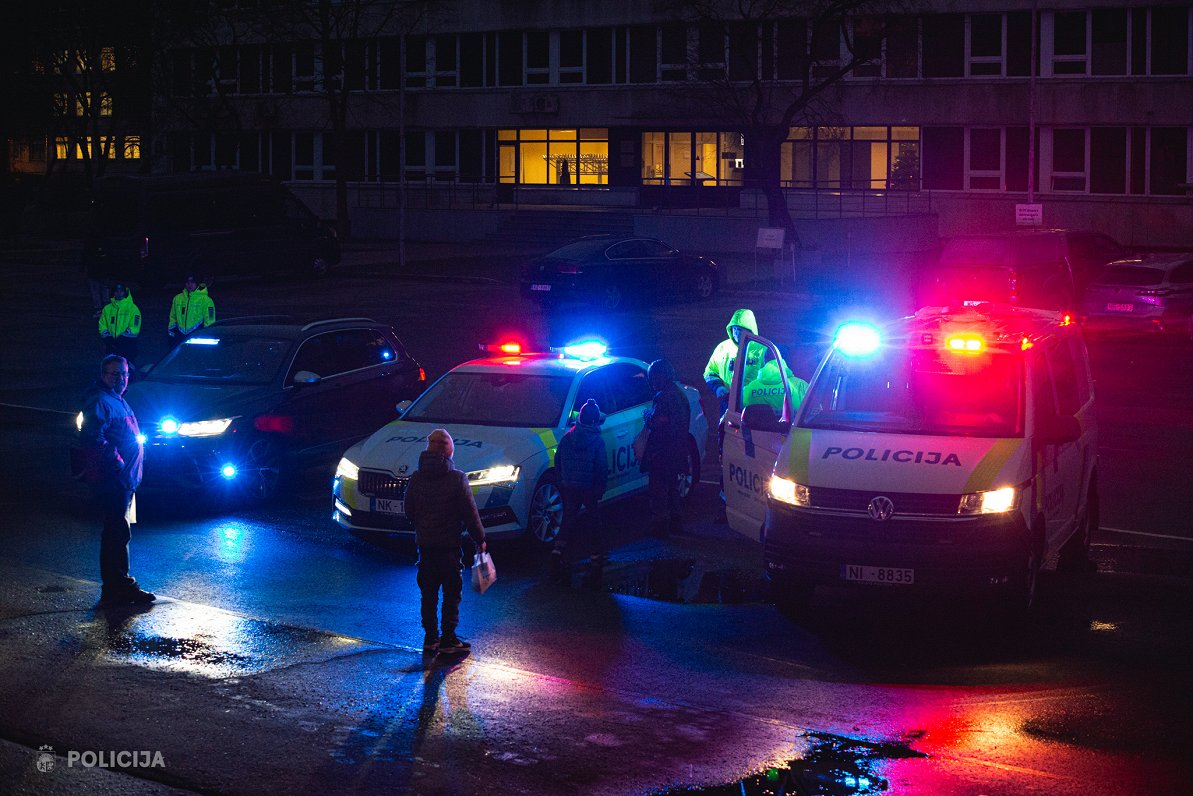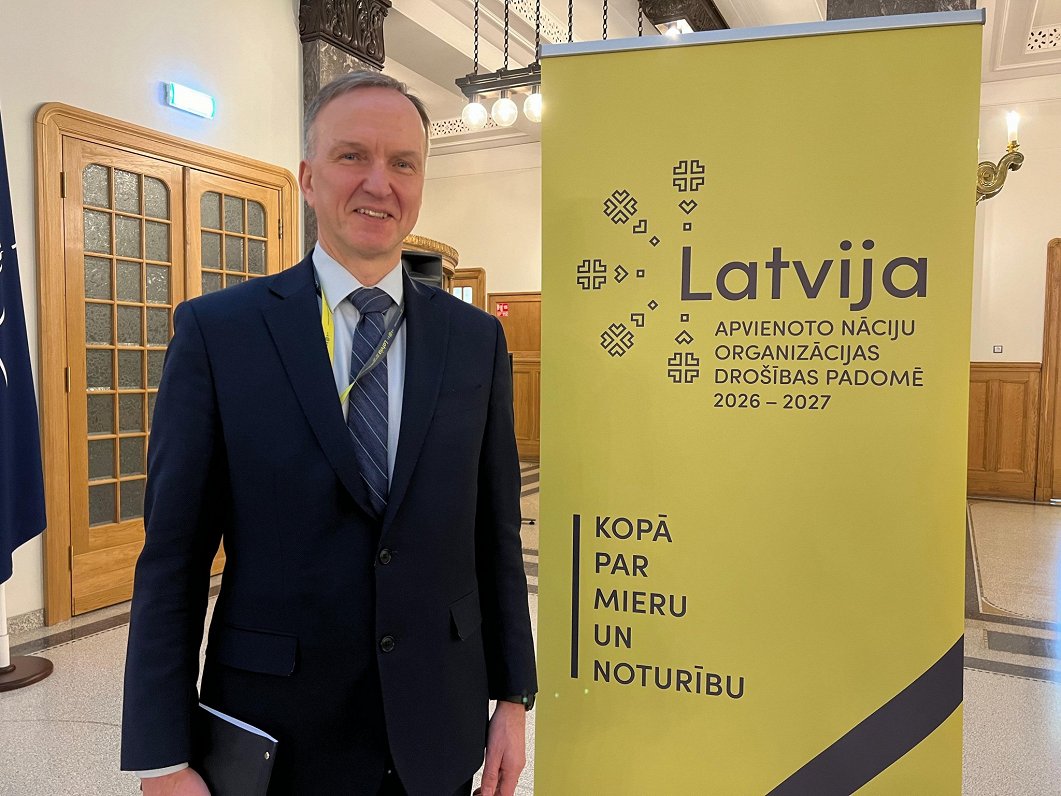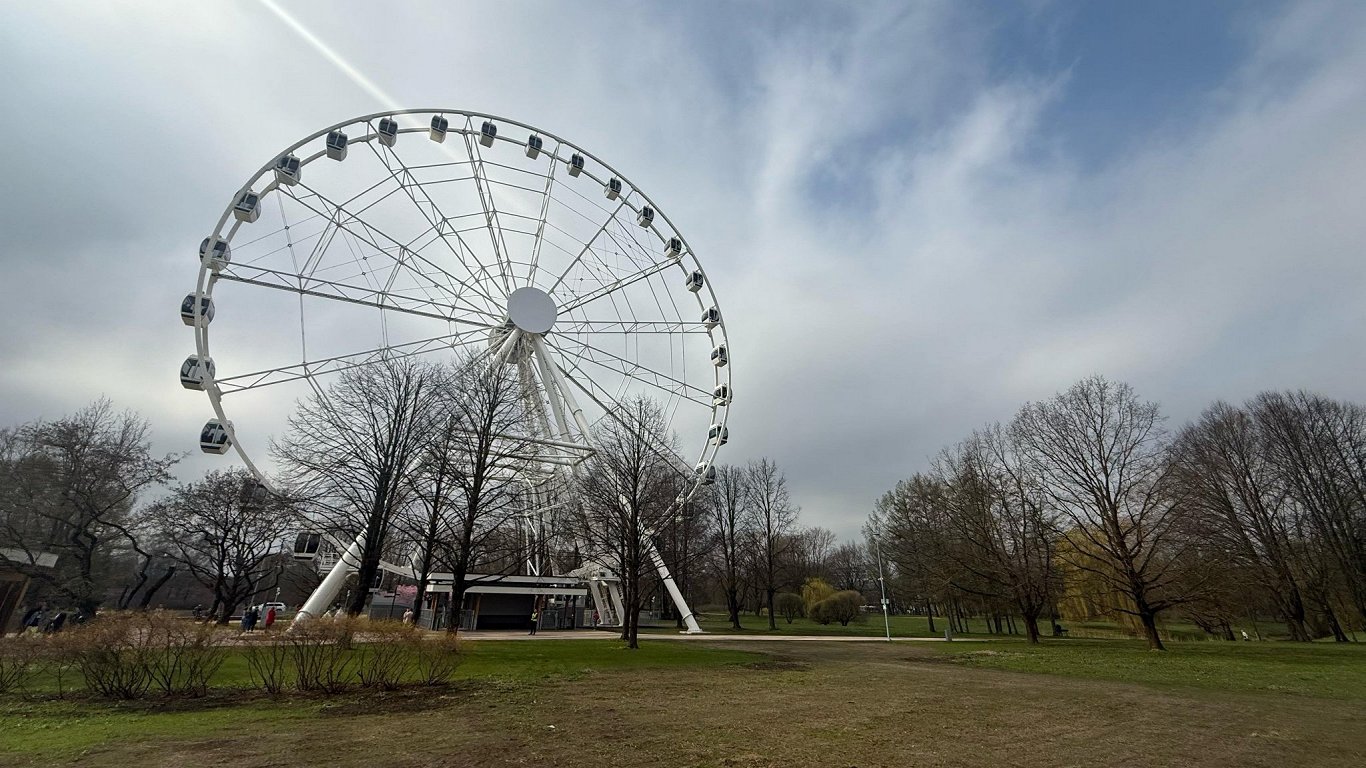A parliamentary commission of inquiry, a prosecutor’s investigation and a probe by the economics police, a journalist investigation, a documentary, and regular, hours-long cabinet meetings. A constant lack of money and also of decisiveness. This is the summary of the Rail Baltica high-speed rail project of 2024, as provided by Latvian Television’s De Facto on December 23.
There is some good news: the European Commission has informally accepted the reallocation of Recovery Fund money to allow the finishing of the Riga stations and the running of the existing trains to the airport.
“This is my property, but where the road goes, there will be a railway, right by my house,” Juris Gerbaševskis shows his former property in Iecava municipality.
Some houses and part of the land were sold for Rail Baltica. It is here that the construction of the main line of the Rail Baltica high-speed train will begin with the establishment of a construction materials base and the first kilometers of track. European Rail Lines signed the contract with the French-Polish-Italian consortium, known as ERB Rail, in December a year ago.
“At one point, when they started cutting, I thought, now something has finally started – they were cutting in parts, but nothing… They drove the machinery here and it was like a damn parade. But it didn’t last long,” says Juris Gerbaševskis. The elderly gentleman is left wondering whether he will be able to take the train to breakfast in Berlin in his lifetime, as he says.
Recently, the contractors met with residents of the Iecava area. They promised to finish the long preparation phase by spring and start building the railway track. The outline of the track is still to be found on a map – there are no marks in nature.
Local residents were most interested in how they would be able to get around during and after the construction work. Whether they will be able to reach their properties left on the other side of the railway, and who will be held responsible if the roads are impassable.
From Misa to the Lithuanian border, the majority of necessary properties have been expropriated for Rail Baltica. Towards Estonia, more than a third of the sites have been taken over. The European Commission has allocated €33 million for the buy-back, to be spent by the end of this year. After that, the costs will have to be covered by the national budget.
Up to two million might not be spent in time, but in that case, the money will be redirected to other activities, the Transport Ministry said.
However, while the government had not decided on the priority of the Rail Baltica works, the joint venture EDzL had already started to expropriate properties from Misa to Riga Airport. Now, the proceedings on 86 cadastral objects at this stage have been suspended pending further decisions.
Dozens of issues on the expropriation of land plots for the Rail Baltica route are being discussed at the latest government meetings – one property, one decision. The current Rail Baltica Implementation Law has not made the process more efficient, while amendments promised in September have been postponed until March.
“The current Rail Baltica law has not improved anything significantly. The only thing is that if the owner does not allow us to carry out geotechnical and certain other field work surveys on his property, which are necessary during the design, then there are these clauses here which say that we can establish a temporary easement for the use of the state, and that is how these geotechnical or topographical surveys can be carried out. But for all the big expropriation processes, there are no significant accelerating elements inside,” says Ēriks Diļevs, head of EDzL.
The Ministry of Transport says that the first phase of Rail Baltica will need around €4 billion, after reviewing spending and making savings where savings can be made.
Taking into account the money already allocated by the European Commission and the expectation of the same amount in the next seven-year period, the missing part is about half or around €2 billion.
“Yes, at the moment we are counting everything in 2023 prices. Of course, the calculations also take into account any potential inflationary increases that might occur. We have also included a margin. With which we count what would be needed in the future. But it is always easier to base economic calculations, financial calculations on real prices,” said Kristine Malnača, Deputy State Secretary at the Ministry of Transport.
After about a year of fiddling, the government finally decided in December to focus on building the main route first. However, the much-talked-about mismanagement of the project and the fragmentary approach to the works have still not been improved.
The government decided that a number of new studies and reports would be useful, including on the expected timetable for construction, the maximum amount of funding allowed, attracting investment for Riga stations, the plan to reorganize the railway companies and strengthening the national implementer. And with great anguish, the government agreed that, for the time being, Riga would be connected to the project by the old gauge tracks.
Some answers were found by the Parliamentary Commission of Inquiry, which presented its final report last week. It concluded that the Rail Baltica project was led by people without the right experience, decisions were taken in a piecemeal manner, ministries did not cooperate with each other and the Ministry of Transport hid the true cost increases from the government.
Among the recommendations are a number of points on both strengthening parliamentary oversight of rail construction, for example by creating a new sub-committee, and that the government should come to the Saeima at least four times a year to report on the progress of work.
“This project is alive, it is not something we are investigating [..] retrospectively. This is a decision that is happening today. And here is a good manual – this final report – to understand where the problems were and where changes need to be made. It has finally been taken to the level of the Parliament. The Saeima needs to get involved in a straightforward way, to see if things have been done, even if it is just legal things,” said Andris Kulbergs (United List), head of the Saeima’s parliamentary commission of inquiry.
The prosecutor’s office will also look for its own version of who is to blame for the losses caused to the state in the implementation of the Rail Baltica project. It has initiated criminal proceedings which will be investigated by the KNAB.
Meanwhile, the European Commission has informally approved the reallocation of €500 million from the Recovery Fund to allow the commissioning of the Riga stations and the launch of the existing train to the airport.
Before taking this decision, international experts checked the validity of the payments made to the stations.
“Let’s be honest, it feels miserable, pathetic. Because a lot of money is being spent in a pathetic, useless way. The rails should have been here a long time ago. We see funds being squandered left and right – firewood being split, a headrest coming off, a boulder coming off. But the project is not going ahead, and this is regrettable,” sadly concludes Uģis Zāģers, head of the Iecava Parish Citizens’ Advisory Council.





